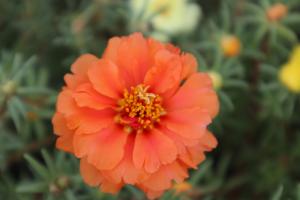How to Plant Low Water Plants
With the increasing concerns on water conservation and climate change, planting low water plants has become a popular trend among gardeners, homeowners, and landscapers alike. Low water plants not only require less water to survive, but they also offer a range of environmental and economic benefits. In this article, we will provide you with some tips on how to plant low water plants successfully.
Choose the Right Plants
The first step in planting low water plants is to select the right plants. Native plants are a good option as they are adapted to your region's climate and soil, and require less water and maintenance. Succulents, ornamental grasses, and Mediterranean herbs are also great choices. Before purchasing plants, make sure to research their water requirements to ensure they are truly low water plants.
Prepare the Soil
Once you have chosen the plants, you need to prepare the soil. Low water plants prefer well-drained soil that is rich in organic matter. It is essential to improve soil structure by adding compost, manure, or other organic materials to help it retain moisture and nutrients. Avoid using synthetic fertilizers or chemicals as they can harm the soil and the plants.
Planting Techniques
When planting low water plants, use the right techniques to ensure their survival. Dig a hole that is twice as wide as the plant's root ball and the same depth. Gently remove the plant from its container, loosen the roots, and place it in the hole. Fill the hole with soil and water thoroughly to avoid air pockets. Mulching around the plant can also help retain moisture in the soil.
Watering and Maintenance
Low water plants do not require frequent watering, but they still need some water to survive. Water the plants deeply and infrequently to encourage deep rooting, which makes them more drought-tolerant. Water early in the morning or in the evening to avoid evaporation. Regularly remove weeds and dead foliage to prevent pests and diseases from affecting the plants. Fertilize the plants only when necessary, and use organic fertilizers.
Conclusion
Planting low water plants is an excellent way to save water, reduce maintenance, and create an eco-friendly landscape. By choosing the right plants, preparing the soil properly, using the right planting techniques, and providing the necessary care and maintenance, you can successfully grow a beautiful and sustainable garden. Start planting low water plants today and contribute to a more sustainable future!

 how many times do yo...
how many times do yo... how many planted tre...
how many planted tre... how many pine trees ...
how many pine trees ... how many pecan trees...
how many pecan trees... how many plants comp...
how many plants comp... how many plants can ...
how many plants can ... how many plants and ...
how many plants and ... how many pepper plan...
how many pepper plan...





























